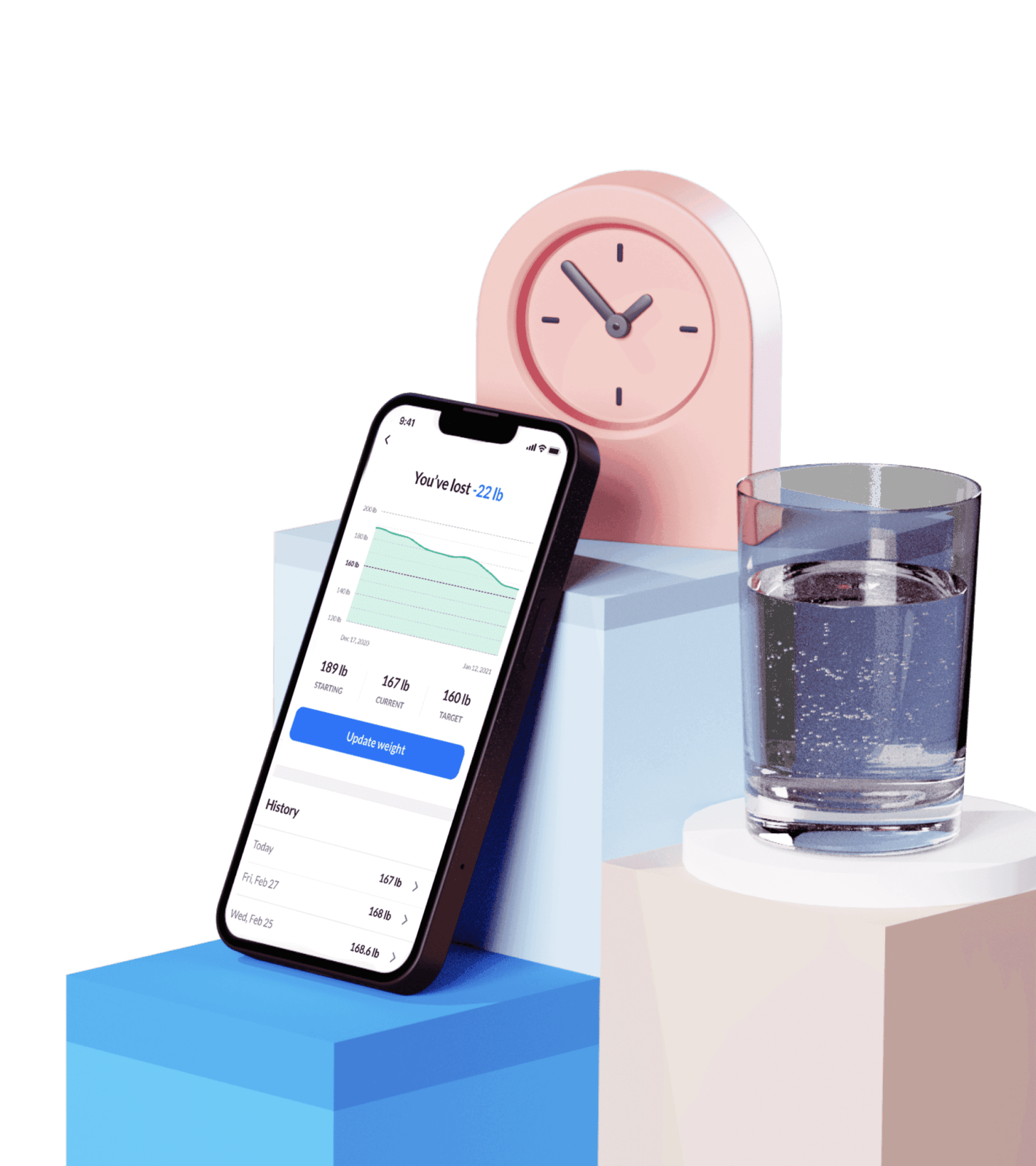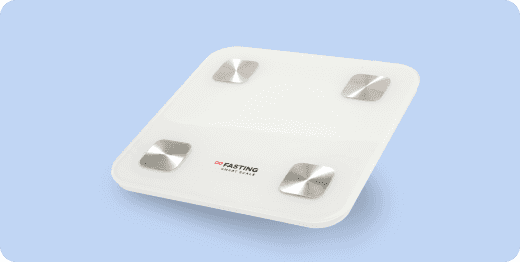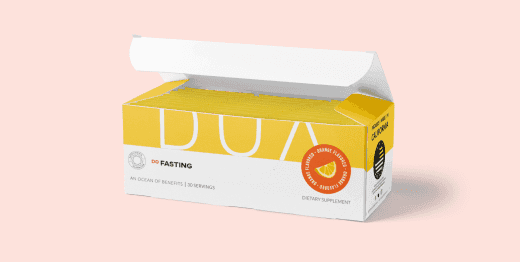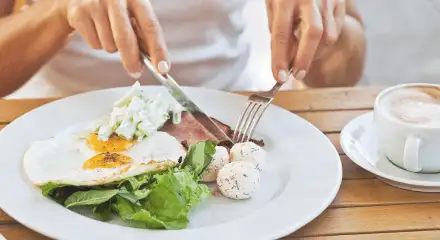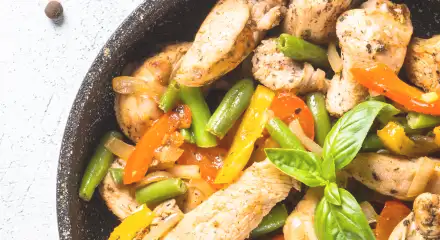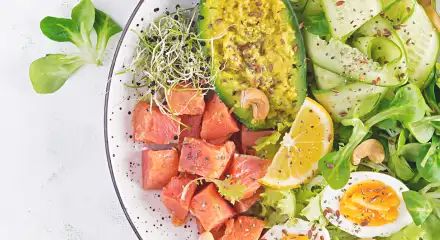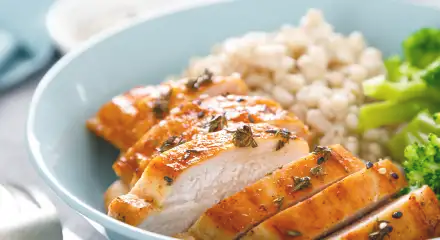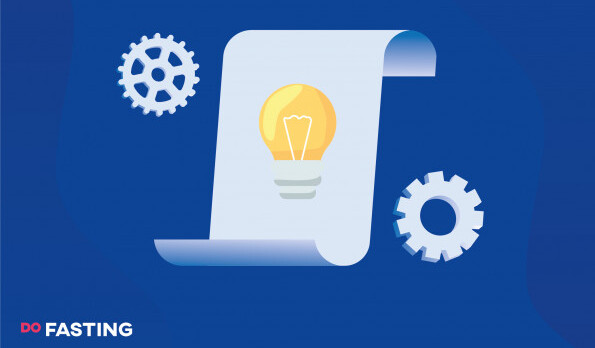Contents
What Is Heartburn?
You’ve probably felt heartburn at some point in your life—it’s a burning sensation in the chest area that may also extend to the neck or throat. In some cases, it can even cause a sour flavor in the mouth.
Heartburn or acid reflux is quite a common condition, even if you don’t practice intermittent fasting. In fact, it can also occur after eating a meal, particularly if it contains spicy or fatty foods.
The condition is caused by the reflux of stomach acid going into the esophagus, which is the tube that carries food down from the mouth to the stomach. Heartburn may be a symptom of gastroesophageal reflux disease (GERD).
In addition to the burning sensation in the chest, other symptoms of heartburn may include:
- Nausea
- Dry cough
- Sore throat
- Regurgitation of food or acid
- Difficulty swallowing
- A feeling that food is stuck in the throat
- Bad breath
- Bloating
- Epigastric pain
- Digestive problems
Heartburn symptoms may be worse when you are eating, lying down, or bending over, and it can last from a few minutes to a few hours, depending on the individual.
Moreover, according to the Gastroenterology Institute of Southern California, acid reflux, heartburn, or gastroesophageal reflux disease can potentially be life-threatening, causing pain when swallowing, ulcers, and even esophageal cancer. It is important to speak with a healthcare professional if you experience frequent or severe heartburn.
Take a
1-minute quiz
and discover how much weight you can lose with DoFasting!
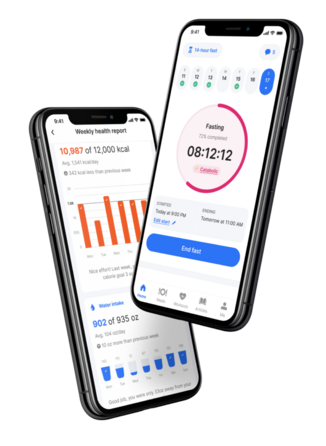
Why Does Heartburn Occur During Fasting?
Even if you don’t eat, your stomach still produces stomach acid, which is required for digestion. For this reason, intermittent fasting can disrupt the acid-base balance in the gut, leading to acid reflux.
When you have an empty stomach for an extended period, the digestive acids have nothing to digest, leading to an excess of acid in the stomach that can move up into the esophagus and cause pain.
Intermittent fasting can also cause the muscles of the stomach and intestines to contract more frequently, pushing the acid into the esophagus.
The symptoms may be worsened by:
- Smoking
- Drinking caffeine
- Eating large meals on your eating window
- Eating spicy or acidic foods
- High levels of stress
- Sleep problems
- Large quantities of fried food
To reduce the likelihood of acid reflux while fasting or alleviate heartburn symptoms, avoid meals and drinks known to cause acid indigestion, such as coffee, alcohol, spicy food, and acidic food. Eating smaller portions more regularly rather than bigger, less frequent meals and avoiding eating late at night are also beneficial.
Additionally, try to avoid lying down immediately after eating and remain upright for a few hours. Going for a walk can also help to speed up the stomach-emptying process and reduce the risk of acid reflux.
Finally, drink lots of water and herbal tea instead of coffee during your fasting window—these fluids can help to keep you hydrated and may help to prevent acid reflux.
8 Ways to Alleviate Heartburn During Fasting
If you experience a burning sensation in your chest while intermittent fasting, here are some ways to make it better.
1. Drink warm water and tea
Staying hydrated can aid the digestion process and relieve the acid reflux that occurs after a meal. In fact, there are many ways liquids can help you get rid of this burning sensation.
Taking frequent sips of water can prevent reflux symptoms because it can help remove acid from the esophagus. If you feel like your cold water isn’t helping, try something a bit hotter—drinking warm water can help dilute acids in the stomach.
Also, water with a hydrogen carbonate supplement can alleviate or even avoid heartburn while fasting, as well as gastroesophageal reflux disease (GERD) symptoms.
Besides water, you can also drink licorice, ginger, marshmallow root, or chamomile tea.
Studies have shown that a herbal formula with deglycyrrhizinated licorice can prevent acid reflux during intermittent fasting or relieve GERD symptoms. And according to another study, ginger tea contains anti-inflammatory qualities and can help reduce nausea.
Just make sure to drink these beverages warm, in small sips, and to do it frequently.
It is recommended to drink about 2 to 3 liters of water per day to ensure proper hydration and maintain normal stomach acid levels. And once you start feeling the reflux, it becomes even more relevant, as not drinking enough water can worsen heartburn symptoms.
To track your water intake and ensure that you are properly hydrated, you can use a tracking app like DoFasting. This app has a simple-to-use water tracking feature where you can monitor your water intake throughout the day. And to make it even better, you can follow various weight-loss factors such as calorie intake, steps, and even fasts—everything you need for a healthy weight-loss journey.
Take a
1-minute quiz
and discover how much weight you can lose with DoFasting!

2. Skip coffee during your fasting window
Drinking coffee is an essential daily ritual for many people, but it may also trigger acid reflux—according to research done in 2020, caffeinated drinks can increase signs of acid indigestion more than other drinks.
This is because coffee causes a response to increased gastric acid production, which leads digestive fluids to ascend to the esophagus. It can also relax the lower esophageal sphincter (LES), located at the intersection of the esophagus and the stomach, which protects the esophagus from acid reflux.
Nonetheless, other research suggests no link between decreased caffeine intake and improved gastroesophageal reflux disease symptoms. According to Gastroenterology and Hepatology, some studies have been conducted to investigate the effect of coffee and caffeine on GERD, but no changes in sphincter pressure or esophageal pH were found.
Still, to be sure that your morning drink doesn’t affect your acid reflux, you can drink herbal tea such as chamomile tea or decaffeinated coffee instead.
3. Avoid carbonated drinks
Carbonated drinks make you burp, which can send acid into the esophagus and cause a burning sensation.
The bubbles in these beverages may also cause bloating, which puts pressure on the lower esophageal sphincter. If this muscle relaxes or weakens, stomach acid can flow back into the esophagus, leading to acid reflux.
On top of that, soft drinks can be high in sugar and interfere with your weight loss goals.
However, other research suggests carbonated beverage consumption doesn’t cause oesophageal damage or GERD-related symptoms.
If you experience acid reflux, consider alternatives to carbonated drinks, such as flavored water, herbal tea, or unsweetened almond milk, which can help hydrate the body without putting extra pressure on the digestive system.
4. Eat more fiber during your eating window
Fiber-enriched foods help support the digestion process and control gastroesophageal reflux disease symptoms—in short, they can help with reflux.
Unlike other nutrients that are broken down and absorbed during digestion, fiber travels through the body largely intact, helping you to empty your digestive tract smoothly. This can help to reduce pressure on the stomach, which can trigger acid reflux and push acid into the esophagus.
Examples of high-fiber foods include:
- Fruits and vegetables — apples, bananas, oranges, raspberries, broccoli, potatoes, corn, carrots, brussels sprouts, cauliflower.
- Whole grains — brown rice, popcorn, oatmeal, barley, whole-wheat pasta, bran flakes, whole-wheat bread.
- Legumes — split peas, black beans, lentils.
- Nuts and seeds — chia seeds, sunflower seeds, almonds, pistachios.
If you’re still unsure if you’re taking all the fiber you need, supplements can be a good option. The DoFasting essential fiber complex is created to defeat hunger pangs, keep your gut bacteria healthy, decrease bloating, and lower cholesterol levels, so you can get all the benefits of fiber in small, convenient packages.
5. Eat smaller meals
Large, hearty meals can put extra pressure on the stomach and increase the likelihood of acid reflux. This is because the extra food can cause the stomach to expand, preventing the sphincter from closing completely and allowing digestive juices to flow back into the esophagus.
In addition, large meals take longer to digest, which can contribute to acid reflux. To reduce the risk of heartburn, it’s important to eat smaller meals that are easy to digest. If this sounds like a challenge to you, here are three ideas to get you started:
- One simple but effective method to reduce the size of your meals is to use smaller plates and bowls. This way, you’ll get smaller servings and reduce your chances of overeating.
- You can also include high-fiber foods in your dishes, which can help you feel satisfied with smaller meals and may also be beneficial for weight loss goals.
- It’s also a good idea to stop eating when you feel about 75% full, as this can help prevent overeating and reduce the risk of acid reflux.
6. Avoid foods that may irritate your stomach
Certain foods can trigger acid reflux or heartburn in people prone to the condition. So if you’ve been feeling discomfort after your meals lately, you may need to start paying attention to what you eat—this can help you manage any uncomfortable symptoms and avoid triggers.
It’s worth noting that every person is unique, and what causes acid indigestion in one person may not affect another. Some common foods that may trigger acid reflux include:
- Citrus fruits and juices — these contain high amounts of citric acid, which can cause high stomach acid levels.
- Tomato and tomato-based foods — like citrus fruits, tomatoes are highly acidic and influence high stomach acid levels.
- Garlic and onion — these vegetables contain a type of carbohydrate called FOS that is not well absorbed by the body and can cause gas and bloating.
- Spicy foods — spicy foods stimulate the production of stomach acid and irritate the lining of the esophagus.
- Fried foods — these are often high in fat and take longer to digest, which puts pressure on the lower esophageal sphincter (LES).
- Fatty foods — like fried foods, fatty foods are also high in calories and take longer to digest, which can put pressure on the LES and increase the risk of acid reflux.
- Alcohol — alcohol is highly acidic and can cause the stomach to produce more acid, leading to, you guessed it, acid reflux.
- Chocolate — chocolate is high in fat and contains caffeine and other stimulants that trigger the production of stomach acid.
- Mint and peppermint — these flavors can relax the lower esophageal sphincter (LES) and allow the stomach acid to go upwards to the esophagus.
7. Sleep with your head elevated
Laying flat makes your throat and stomach at the same level, making it easy for stomach acid to flow back into the esophagus, causing pain that comes with heartburn.
To relieve acid reflux at night, it’s recommended to keep your head elevated about 6 to 8 inches above your feet. This can be done by using bed risers to lift the head of your bed or using a foam wedge support for your upper body.
However, it’s worth noting that simply stacking pillows may not provide enough support.
It’s also a good idea to sleep on your left side as this can help keep the stomach below the esophagus and make it more difficult for acid to flow back up.
Avoid sleeping on your back or right side, as these positions may increase the risk of acid reflux.
8. Consider taking medication
If other remedies are not effective or you experience acid reflux regularly, you may want to consider taking medication to help manage your symptoms.
Some medications that are used for heartburn or acid reflux include:
- Proton pump inhibitors (PPIs) — to reduce the production of acidic stomach juices by inhibiting a certain enzyme.
- H2-receptor antagonists (H2RAs) — to prevent a large amount of digestive acid from being made.
- Antacids — to neutralize stomach juices.
- Prokinetics — to speed up the stomach-emptying processes.
It’s important to note that these medications can have adverse side effects, such as diarrhea, nausea, vomiting, difficulty swallowing, pain in the upper stomach area, and even severe bowel inflammation.
Therefore, it’s essential to consult with your doctor to determine the best treatment course for your specific needs and to make sure that medication is the most appropriate option for you.
Take a
1-minute quiz
and discover how much weight you can lose with DoFasting!

Heartburn And Fasting: Key Takeaways
It’s true that being on an empty stomach for an extended period, such as when fasting for weight loss, can worsen heartburn or acid reflux symptoms.
Heartburn is a burning sensation in the chest that may also travel to the neck or throat and is caused by stomach acids flowing back into the esophagus.
To relieve or avoid acid reflux symptoms while fasting, drink warm water and tea, avoid coffee and carbonated drinks, eat more fiber, and divide your meals into smaller portions.
See how DoFasting will improve your life
Find out what works for you with this 60-sec quiz approved by our experts and get your personal revolutionary fasting assistant.
Start the Quiz